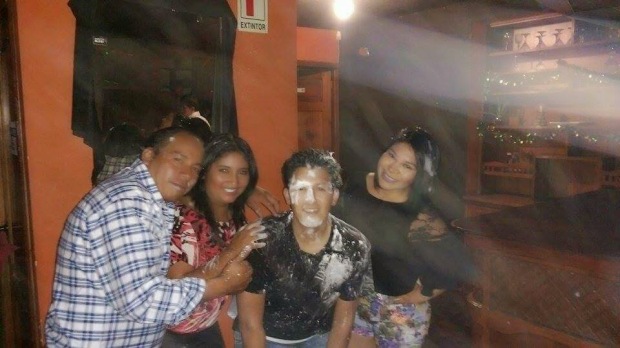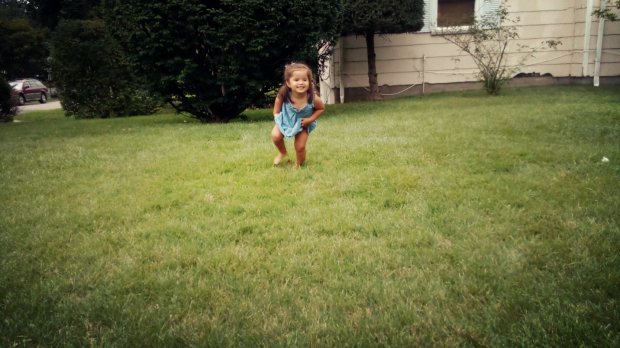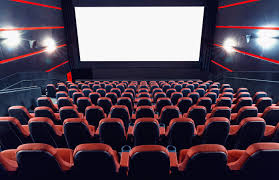
Tag Archives: entertainment
Don’t be BORING!
Don’t ever let your everyday life become monotonous. Monotonous is boring, uninteresting! Even if you do the same thing every day, do it differently, every time.
For example; I go to the same place every day, I know the fastest route, however, I don’t always take it.
I like changing things up!
Every day is a new adventure, and you must live it up!
When life gets too serious and boring, find something or someone who can make you smile. 🙂
On this blog, I will share the things that make me smile !

(Hudson River, Tarrytown, NY)
A beautiful SUNSET. See the sun kiss you goodnight.
After a long day, there is nothing better than seeing a fusion of color naturally created just for us!

Don’t be afraid to get dirty, as long as your having fun!
Being comfortable around friends and family will allow you to enjoy life in silly ways!

(Peanut Leap Cascade, New Jersey)
See the world from a different perspective! Find an elevated spot and be (the King of the world!)
Life can get very serious and monotonous sometimes. The best way to unwind is by spending time with someone energetic and unpredictable! Someone who doesn’t care what people think, they can jump, run, laugh, and jiggle without any remorse.

A child’s innocence is precious!
When life gets in the way, be a child!
Don’t be boring!
The Disney Renaissance
The Disney Renaissance
Walter Elias “Walt” Disney was born on December 5, 1901, in Hermosa, Illinois. Walter along with his brother Roy, co-founded Walt Disney Productions, in 1923, which became one of the best-known motion-picture production companies in the world.
After decades of success, Disney Productions lost popularity. Walter and Roy’s death, 1966, left Donn Tatum, Card Walker, and Ron Miller in charge of production. When Don Bluth, a long-time animator, branched off taking 11 Disney animators along with him, production delayed. For the next 20 years Disney did not have a box office hit. The animation department was pushed to a side.
In 1988, Steven Spielberg, a long-time animator joined the Disney animation team. “Who Framed Roger Rabbit”, a live action/animation was created. This film was a success. It won three Academy Awards, bringing interest on animation back to Disney.
The Disney Renaissance was a successful era in which cartoon movies took a turn for the best.
The Little Mermaid was approached differently, it wasn’t a regular cartoon, nor a regular musical. It was written, composed, and produced as a Broadway Musical. Its development started in the 1930s. Lyricist Howard Ashman and composer Alan Menken both with Broadway background took over the project and turned it into what is known today. Ashman and Menken were involved in all Disney Renaissance Productions.
November 14, 1989, The Little Mermaid was released breaking the record of highest-grossing animated film.

It marked the start of the Disney Renaissance, following with all-time favorite animated movies, The Lion King, Mulan, The Beauty and the Beast, Pocahontas, Hercules, The Hunchback of Notre Dame, Aladdin, and The Rescuers Down Under.
Film vs Theatre
Film vs Theatre

We use the word theatre along with drama to describe activity in our daily life. Acting is part of our everyday lives: we describe our behaviors in our professional and personal scopes as if we were performers on the stage of life.
Theatricality is all around in many of the popular art forms that engage us. The relationship between film and theatre is very deceptive, nevertheless, all part of our popular entertainment.
The most significant difference between both art forms is the distance between performers and audience.
In film, the interaction with performers is presented or blocked by a screen. The more natural the acting the better. In contrast to theatre, actors don’t need to exaggerate their movements. The camera angels, and background music will capture the mood and tone of the scene.
Regardless of challenges from movies, radio, and television, theater has continued to thrive in the twenty first century. Perhaps this is so because of the “live” nature of theater, for theater is an event in which the performers are in the presence of the audience. This creates a circular flow of energy, as performer affects audience and audience affects performer. The play may be scripted exactly the same every single time, yet, every performance will be different. The group experience is essential to theater, as the group reinforces the emotions experienced by the individual and creates a “collective mind.” When a group of individuals respond more or less in agreement to what is occurring onstage, their relationship to one another is reaffirmed and strengthened.
On the other hand, film is the director’s territory. The director calls all the shots, unless the actor is a huge box office draw, everything he says is unnecessary. They move from moment to moment in no particular order, most of the time, with little to no rehearsal time. Editing and good sound music can turn a lousy performance into a star on the screen.
Oddly, film actors can work very quickly to put a scene together in a film that then exists forever while theatre actors may work for months to achieve a performance that only lasts as long as the run of the show.
Film and theatre are two similar, yet extremely different forms of art.
How Eugenio Derbez inspires me!
I remember being a 6 year old and watching different comedian characters all over the Hispanic television. No one in my family missed an episode of XHDERBEZ.
As I grew older, I found out all these characters were represented by the same man, Eugenio Derbez.

(Taring.net)






